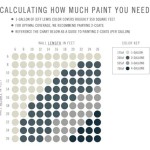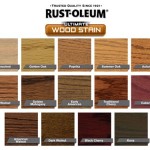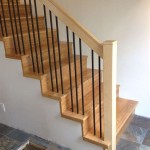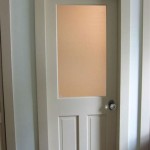How Much Does It Cost To Remove And Replace An Interior Door In A House?
Replacing an interior door can significantly improve a home's aesthetics and functionality. The cost to remove and replace an interior door in a house is variable, dependent on several factors. This article explores the various elements impacting the overall expense of such a project, providing a detailed understanding of the typical price ranges and considerations for homeowners.
The fundamental costs associated with replacing an interior door include the price of the new door itself, the labor involved in removing the old door and installing the new one, and any additional materials required for the job, such as shims, nails, screws, and potentially paint or stain. The complexity of the installation, the type of door selected, and regional labor rates all contribute to the final cost. Homeowners should consider all these aspects when budgeting for this home improvement project.
Generally, the cost range for replacing an interior door can fall anywhere from $100 to $800 or more per door. The lower end of this range usually applies to simple replacements with pre-hung doors, where minimal modifications to the existing frame are required. The higher end of the range is applicable to more complex installations involving custom doors, modifications to the door frame, or specialized hardware.
Door Type and Material Costs
The type and material of the interior door significantly impact the overall cost. Interior doors are available in a wide range of materials including hollow-core, solid-core, wood, fiberglass, and even metal. Each material has its own price point and associated benefits and drawbacks.
Hollow-core doors are the most economical option, typically ranging from $30 to $100 per door. These doors are lightweight and easy to install, making them a popular choice for bedrooms and closets where sound insulation is not a primary concern. However, they offer minimal soundproofing and are not as durable as solid-core doors.
Solid-core doors provide better sound insulation and a more substantial feel. They are constructed with a wood composite or particleboard core, often clad in a veneer of wood or a molded composite. The cost of a solid-core door can range from $70 to $300, depending on the specific materials and construction.
Solid wood doors are the most expensive option, ranging from $200 to $800 or more per door. These doors are typically made from hardwoods such as oak, maple, or mahogany. They offer superior durability, sound insulation, and aesthetic appeal. However, they are also heavier and require more expertise to install properly. Furthermore, solid wood doors can be susceptible to warping and cracking in environments with fluctuating humidity levels, potentially necessitating additional maintenance.
Fiberglass doors are a durable and low-maintenance option, often used in areas with high humidity or temperature fluctuations. They are resistant to warping, cracking, and insect damage. The cost of a fiberglass interior door typically ranges from $150 to $400. While they are more expensive than hollow-core doors, their longevity and resistance to environmental factors can make them a cost-effective choice in the long run.
Beyond the core material, the door's design and features also influence the price. Panel doors, with their raised or recessed panels, generally cost more than flat, flush doors. Similarly, doors with glass inserts or decorative hardware will add to the overall expense. The choice of finish, whether it's a pre-finished door or one that requires painting or staining, also needs to be factored into the budget.
Labor Costs for Removal and Installation
The labor cost for removing and replacing an interior door typically ranges from $50 to $200 per door, depending on the complexity of the job and the hourly rate of the installer. Factors that can influence labor costs include the condition of the existing door frame, the need for modifications to the frame, and the type of door being installed.
If the existing door frame is in good condition and the new door is a standard size, the installation process is relatively straightforward. The installer will remove the old door, install the new door hinges, and ensure the door swings smoothly and latches properly. In this scenario, the labor cost will likely be on the lower end of the range.
However, if the existing door frame is damaged or out of square, the installer may need to make modifications to ensure the new door fits properly. This could involve shimming the frame, planing the door, or even replacing sections of the frame. These modifications can add to the labor cost and potentially increase the overall project expense.
The type of door being installed can also affect labor costs. Pre-hung doors, which come already mounted in a frame, are generally easier to install than slab doors, which require the installer to cut hinge mortises and drill for the doorknob and latch hardware. Installing a slab door requires more skill and time, which translates to higher labor costs.
Regional labor rates also play a significant role in determining the overall cost. In areas with a higher cost of living, contractors typically charge more for their services. It is always advisable to obtain multiple quotes from different contractors to ensure a fair price is being obtained.
Homeowners competent in basic carpentry may consider installing the door themselves to save on labor costs. However, improper installation can lead to problems such as a door that doesn't swing smoothly, latches incorrectly, or doesn't seal properly. These issues can result in drafts, increased energy bills, and premature wear and tear on the door. Unless confident in one's abilities, it is generally recommended to hire a professional installer to ensure a proper and long-lasting installation.
Additional Costs and Considerations
Beyond the cost of the door and labor, several additional costs and considerations can impact the overall expense of replacing an interior door. These include the cost of hardware, painting or staining, disposal fees, and potential structural modifications.
Hardware costs can range from $10 to $100 or more per door, depending on the style and quality of the doorknob, hinges, and other accessories. Basic doorknobs and hinges are relatively inexpensive, while more decorative or high-end hardware can significantly increase the cost. It's essential to choose hardware that complements the door's style and finish and is durable enough to withstand daily use.
If the new door is not pre-finished, it will need to be painted or stained to match the existing decor. The cost of painting or staining can range from $30 to $100 per door, depending on the size of the door and the type of finish being applied. Homeowners can save money by painting or staining the door themselves, but it requires time, skill, and the proper equipment. It's crucial to prepare the door surface properly and apply multiple coats of paint or stain for a professional-looking finish.
The removal and disposal of the old door can also incur costs. Some contractors include disposal fees in their overall estimate, while others charge a separate fee. Homeowners can also dispose of the old door themselves at a local landfill or recycling center, but this will require transportation and may involve disposal fees.
In some cases, replacing an interior door may require structural modifications to the door frame or surrounding wall. This is especially true if the new door is a different size or shape than the old door. Structural modifications can significantly increase the cost of the project and may require the services of a licensed contractor. Before starting the project, it's essential to carefully assess the existing door frame and surrounding wall to identify any potential structural issues.
Finally, unforeseen issues can arise during the project that can add to the overall cost. For example, the installer may discover hidden damage to the door frame or wall that needs to be repaired. It's always a good idea to budget for unexpected expenses when undertaking a home improvement project.
Therefore, understanding all these contributing factors is crucial for accurate budgeting and planning when replacing an interior door. While a simple door replacement can be relatively inexpensive, more complex projects involving custom doors, frame modifications, or specialized hardware can significantly increase the overall cost. Obtaining multiple quotes from qualified professionals and carefully assessing one's needs and budget are essential steps in ensuring a successful and cost-effective door replacement project.

What Is The Cost To Replace A Door Frame In 2025 Checkatrade

Internal Door Fitting Cost In 2025 Fitters Checkatrade

Cost To Replace Door Frame Angi

Internal Door Fitting Cost In

Internal Door Fitting Cost In 2025 Fitters Checkatrade

Internal Door Fitting Cost In

Replacing An Interior Door Rogue Engineer

Door And Frame Replacement Costs In 2025 Factors Ways To Save Taskrabbit Blog

How Much Does Interior Door Installation Cost 2025 Data Angi

Internal Door Fitting Cost In
Related Posts








